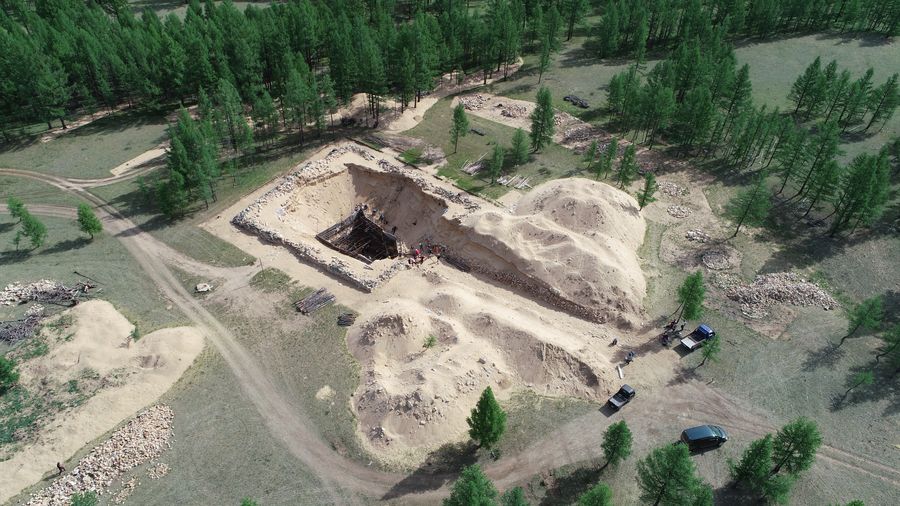
Photo provided by the archaeological team shows the two gilded silver dragons unearthed from the tombs of Xiongnu aristocrats in north-central Mongolia.
ZHENGZHOU, Sept. 6 (Xinhua) -- Among a trove of gold, silver, bronze, jade and wood artifacts, two gilded silver dragons attracted the eyes of Chinese archaeologists taking part in a joint field excavation project in Mongolia.
The work on the tombs of Xiongnu aristocrats in north-central Mongolia has entered its third year. In July, the Sino-Mongolian joint team completed the excavation of one of the 400 tombs, numbered M189, in which the gilded silver dragons were unearthed.
"The dragons, each 8 cm in length and with a gesture looking back to its vertical tail, bear obvious characteristics of the Western Han Dynasty (206 B.C.-A.D. 25)," said Dr. Lan Wanli, head of the Chinese archaeological team.
Details of the dragons' horns, eyes, teeth and feathers were exquisitely carved. Experts suspect they were ornaments attached to a decorative vessel.
Lan said the two gilded silver dragons not only testify to the cultural exchange and interaction between the prairie in the north and central China, but also indicate that the owner of the tomb had a high status in Mongol society.
The Xiongnu people were an alliance of nomadic tribes also known as the Huns that emerged around the end of the third century B.C. and had a huge impact on Chinese and world history. During the Han Dynasty, the Xiongnu and the Chinese imperial court clashed several times.

Photo provided by the archaeological team shows the excavation site of the tombs of Xiongnu aristocrats in north-central Mongolia.
"The tomb in Mongolia predates most of the previously discovered Xiongnu aristocratic tombs in Russia and Mongolia," said Lan.
He said the archaeological team also unearthed a jade belt hook, wooden cups, leather horse harness and other household utensils, chariots and weapons from the tomb.
"The bottom of the coffin is covered with a layer of fabric, followed by a layer of unhusked millet, with a small amount of chenopodium, covered with fabric, followed by a layer of unhusked millet and a large amount of sawdust, mixed with small pieces of charcoal and chenopodium, and another layer of fabric," he said.
This kind of arrangement was found for the first time in the tombs of Xiongnu aristocrats, Lan said.



